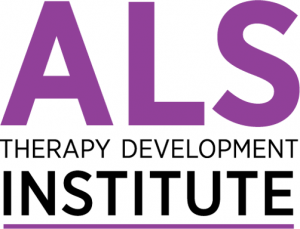The Tests and Procedures for Diagnosing ALS
Posted: August 20, 2021 in Other News
 ALS TDI
ALS TDI
CAMBRIDGE, MA – The journey from the first symptoms of amyotrophic lateral sclerosis (ALS) to a confirmed diagnosis can be long and challenging. There is no one test that can determine whether someone does or does not have ALS. Many different kinds of testing are often required to rule out the various other diseases that can cause similar symptoms, from cancers to autoimmune disorders to other neurodegenerative diseases like Parkinson’s and Multiple Sclerosis. The diagnosis process can take months, or even years. However, obtaining a conclusive diagnosis of ALS is crucially important for developing a proper plan for care and treatment. It is also often a requirement if one is interested in participating in a Clinical Trial.
The most widely accepted benchmarks for assessing whether a person has ALS are known as the “El Escorial” criteria. According to these criteria, in order to receive a diagnosis of ALS a person must first display evidence of degeneration of BOTH the upper and lower motor neurons. Additionally, there must be evidence that the person’s symptoms are worsening in one part of the body and/or spreading to other parts. Finally, there must be an observed lack of evidence that these symptoms are caused by another disease.
Neurological Testing
When someone begins to experience the early symptoms of ALS like muscle weakness in the limbs or face, the first step is often an appointment with a neurologist. In this examination, a neurologist will most likely ask questions about the person experiencing ALS-like symptom’s family history, work, and possible environmental risk factors. They will also look for signs of localized muscle weakness, upper and lower motor neuron symptoms like involuntary twitching, hyperactive reflexes, and muscle spasticity.
EMG
If a neurologist suspects the cause of a person’s symptoms to be ALS, electromyography, or EMG testing, is often the next step in the diagnostic process. An EMG tests the ability of muscles response to contract in response to the electrical stimuli from the nerves. First, electric shocks are sent through the nerves, to determine whether the symptoms are a result of nerve damage or another disease that affects the nerves such as multifocal motor neuropathy. This part of an EMG test is also known as a Nerve Conduction Study (NCS).
In the second part of an EMG test, also known as the “needle electromyography,” fine needles are inserted into certain muscles in order to observe the electrical activity both at rest and when the test subject tries to move. Abnormalities observed during this test may provide evidence that ALS is in fact behind a person’s symptoms. Some people may need multiple EMG tests before they receive an ALS diagnosis, as the test may not be able to clearly identify the signs of ALS early on in a person’s progression.
MRIs, Blood Tests, Biopsies, and Ruling out Other Diseases
A magnetic resonance imaging test (MRI) may also be necessary during the ALS diagnosis process. An MRI is a non-invasive procedure that allows doctors to see detailed images of organs and tissues inside the body. An MRI can help clinicians rule out other possible causes of ALS-like symptoms such as brain tumors, multiple sclerosis, and certain disorders of the spinal cord.
To further rule out other diseases blood tests, urine tests, and even a spinal tap may be required. These can rule out infections with similar symptoms, such as Lyme disease. A muscle biopsy, in which a small piece of muscle is removed and examined under the microscope may also be necessary.
Throughout the diagnostic process, people might receive a diagnosis of suspected, possible, probable or definite ALS depending on the evidence observed by clinicians. Without a definite diagnosis, people with possible or probable ALS nevertheless remain eligible to participate in a growing number of clinical trials evaluating emerging treatments for the disease.
Genetic Testing
After receiving an ALS diagnosis, one may also choose to undergo genetic testing. This can help determine whether an individual’s ALS case is sporadic, or if it is cause by an inherited gene mutation. This can be very important for people who have a family history of the disease.
Commercially available tests can identify dozens of ALS-linked genes. Those that undergo genetic testing are typically provided genetic counseling, during which they learn how to interpret results. Determining what mutations might be present can also determine whether someone might be eligible for certain clinical trials for drugs targeted at specific mutations, such as C9orf72 or SOD1.
Future Tests
In addition to the tests available today, researchers are working hard to develop new, more accurate, and faster tests to diagnose ALS. At the ALS Therapy Development Institute (ALS TDI), a major goal of our Precision Medicine Program (PMP) is to identify new ways to more quickly and accurately diagnose ALS. Through our in-home blood collection program, we are searching for biological indicators (biomarkers) that can be detected through a simple blood test. Finding more reliable biomarkers of ALS progression or risk could potentially give clinicians new tools to diagnose the disease or even identify people who are at high risk of developing ALS before they show symptoms.

